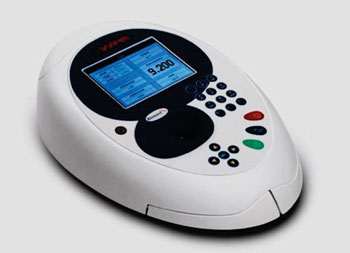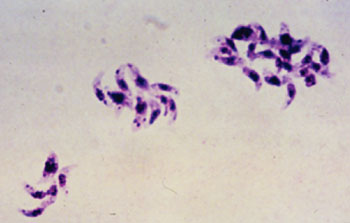LAMP Technique Detects Toxoplasmosis
By LabMedica International staff writers
Posted on 17 Jun 2015
The analytical sensitivity and specificity of a newly described DNA amplification technique, loop-mediated isothermal amplification (LAMP), has been tested for the diagnosis of toxoplasmosis. Posted on 17 Jun 2015
Toxoplasma gondii is an obligate intracellular protozoan parasite capable of infecting humans and all warm blooded animals worldwide and despite the high rate of infection in human, infections often remain asymptomatic in immunocompetent individuals.
Scientists at the Lorestan University of Medical Sciences (Khorramabad, Iran) prepared T. gondii tachyzoites from peritoneal exudate from infected mice. Extraction of DNA was performed using the classical phenol chloroform extraction, and two commercial DNA extraction kits. A Nano-spectrophotometer WPA-Biowave II (Biochrom; Cambridge, UK) was used to determine the concentration and quality of the DNA. Each T. gondii one 80-Mbp genome was assumed equal about 80 fg DNA.
The analytical sensitivity of LAMP and nested-polymerase chain reaction (PCR) was obtained against 10-fold serial dilutions of T. gondii DNA ranging from 1 ng to 0.01 fg. DNA samples of other parasites and human chromosomal DNA were used to determine the specificity of molecular assays. The team analyzed the sensitivity, specificity and technical performances of the LAMP and nested-PCR assays by targeting the two repetitive conserved regions (RE and B1) in the Toxoplasma genome for the molecular diagnosis of T. gondii infection.
After testing LAMP and nested-PCR in duplicate, the detection limit of RE-LAMP, B1-LAMP, RE-nested PCR and B1-nested PCR assays was one fg, 100 fg, 1 pg and 10 pg of T. gondii DNA respectively. All the LAMP assays and nested PCRs were 100% specific. The RE-LAMP assay was the most sensitive for the detection of T. gondii DNA.
The authors concluded the LAMP technique has a greater sensitivity for detection of T. gondii. Furthermore, these findings indicate that primers based on the RE are more suitable than those based on the B1 gene. However, the B1-LAMP assay has potential as a diagnostic tool for detection of T. gondii. Because of its simplicity, sensitivity, and specificity, LAMP is suggested as an appropriate method for the routine molecular diagnosis of toxoplasmosis. The study was published on May 20, 2015, in the Asian Pacific Journal of Tropical Medicine.
Related Links:
Lorestan University of Medical Sciences
Biochrom















